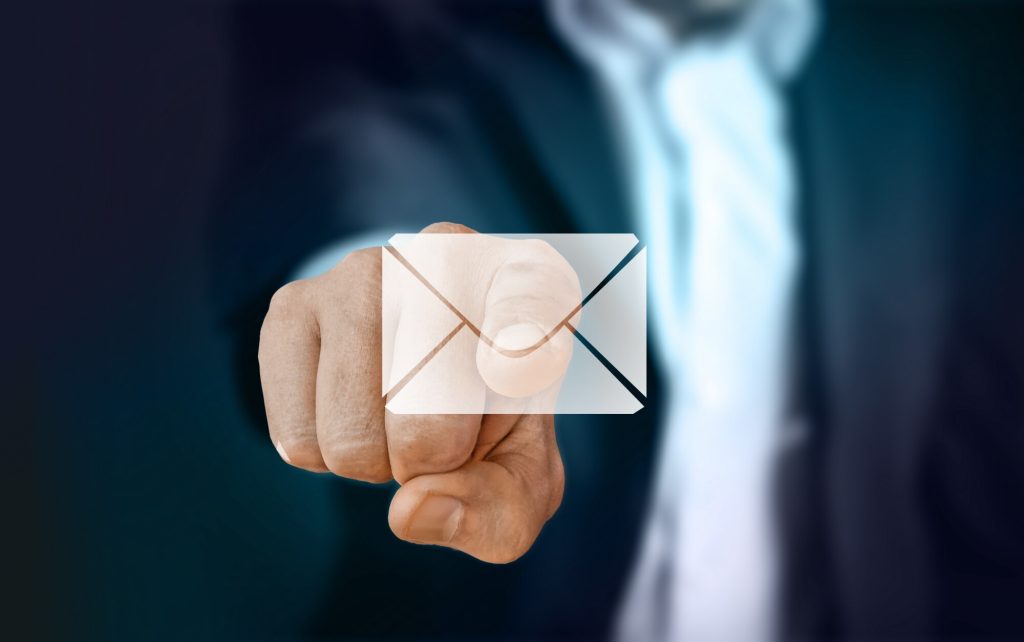
So Fresh and So Clean: 10 of the Best Email Hygiene Practices
In today’s comprehensive guide, we tell you all you need to know about email hygiene. We’ll tell you why your business needs a clean email list and how you can maintain email hygiene in your business.
Read on to learn more.
An astounding 81 percent of small businesses depend on email as their primary channel for acquiring customers. 80 percent use the same channel for customer retention.
Email marketing can truly transform your business. The ROI of this marketing approach is a mind-boggling 4400 percent. That’s $44 for every $1 you invest in email marketing.
To maximize the benefits of email marketing, you need to make sure that your campaigns have the highest possible engagement rates. Successful deliverability of email is critical. The surest way to boost both engagement and deliverability is through email hygiene.
Over 20 percent of commercial, permissioned emails don’t get delivered to the intended inboxes. These emails get lost at the gateway or end up in the spam filter. If it’s been long since you last updated your email list, now’s the time to do it, and that’s what email hygiene is all about.
What Is Email Hygiene?
Email hygiene, or email scrubbing, refers to the process of removing inactive, non-engaging, and bounced email addresses from your email list. It’s the most important aspect of email list management.
You can learn how to build an email list, create a large email marketing database, and send out a ton of emails, but these efforts will not have the desired effects if you have an unclean email list.
Proper email hygiene can significantly transform your email marketing efforts, helping you improve your sender reputation, enhance engagement rates, and minimize the chances of your emails landing on deny lists.
Telltale Signs Your Business Lacks Email Hygiene
Email hygiene should be a regular practice in your company. But with all the activities going on in your business on a daily business, it’s easy to forget about your b2b email list’s quality. If you’re starting to notice the following about your email data, it’s time to take action.
Low Open Rates
If your email open rates have started to plummet, it could mean a few things. It could be a sign of low deliverability rates. If only a few people are receiving your emails, it means many of the emails you’re sending can’t be opened in the first place as they don’t reach the targets.
Low open rates may also mean that your subject lines are poorly written. It could also mean poor email list segmentation, where your messages are too generic to resonate with anyone.
Low CTR
A CTR (click-through-rate) refers to the percentage of people who open your email and click on the link provided inside. High CTRs mean that your targets are finding your emails useful. In contrast, low CTR is a sure sign that people don’t find what you’re offering interesting.
Segmenting your list better can help fix this. The idea is to send more specific emails to subsets of consumers. Deploying email personalization techniques can also encourage people to open emails and click on links.
High Bounce Rate
A bounce rate refers to the percentage of emails that never make it into the intended inbox.
Aim to keep your bounce rate below 1 percent. If that rate starts to exceed the 2 percent mark, you likely have an email deliverability issue. It means some of the emails you collected during email list building may be incorrect.
The consequences of a high bounce rate exceed having your subscribers not receive your email. Email providers such as Google see your bounce rates as an indicator that you’re sending spam. Your sender reputation can suffer considerably.
Your Emails End Up in Spam
If most of your emails are ending up in spam, it’s a clear indication that you have a dirty email list. Check your IP reputation on relevant websites and find out whether you have a spammy one. Cleaning your list can help turn things around.
How Often Should You Clean Your Email List?
Ideally, your email list should stay clean at all times. But in an increasingly busy business environment, you can’t clean your email lists every other hour.
So, what’s the best email cleaning frequency? That depends on the size of your business and how often you send and receive emails. Generally, small businesses should clean their email lists once a month.
Tips for Email Hygiene
Now that you understand the importance of proper email hygiene and what indicators to look for when your email list is dirty, it’s time to look at some email hygiene best practices. Use the following tips to boost the quality of your email list.
Stick to Your Email Cleaning Schedule
An effective email hygiene strategy begins with determining your email list cleaning intervals. We already pointed out that small businesses can benefit from monthly email list cleaning.
For other businesses, email scrubbing frequency depends on various aspects, including how large your list is. Larger lists require a higher level of rigor than smaller ones. A review of your engagement metrics may also reveal the need for an immediate email list cleaning.
Whatever cleaning frequency you decide is ideal, be sure to stick to it. At the end of the year, revisit your cleaning frequency and decide whether to revise it or maintain it.
Avoid purchasing Email Lists
A common mistake businesses make is to purchase email lists from third-party vendors. Sure, you may reap a few immediate benefits by doing so, but these benefits are only short term.
Most times, the majority of the email list file doesn’t earn you any value. Many targets may even opt to add you to their deny list. It’s an outcome that doesn’t help your email marketing program.
Focus on creating your own lists by targeting customers who are genuinely interested in what you have to offer.
Remove Role Accounts
A role account refers to an email that represents a group or an alias. Since the email doesn’t represent an individual, it doesn’t get checked or read often. Once the employee who checks the email leaves the company, the new person who steps into the role may opt not to receive your emails or mark your email as spam.
One way to check for role emails is through email validation. There are useful online email validation tools that can identify and automatically remove role emails from your email lists.
Remove Invalid and Bounced Emails
The best emailing systems remove hard bounces automatically after two tries. That’s a good thing because you don’t want to keep mailing to invalid email addresses. Bounced emails can impact your metrics negatively, particularly your delivery rates.
Sometimes, however, it’s challenging to identify invalid emails. Using the right validation tools can prove beneficial here. These tools accurately show you which emails are most likely to become hard bounces.
Remove All Unengaged Recipients
Removing unengaged recipients from your email lists stings the most. However, don’t take it personally when your targets don’t engage with your email. Chances are you, too, have signed up to receive emails that you never get around to opening.
While you’re required by law to provide an unsubscribe link in all of your emails, many of your recipients may never get around to unsubscribing. When months go by, and a recipient hasn’t opened at least one of your emails, it’s time to get them out of your email list.
Email providers such as Yahoo and Gmail look at your engagement metrics when deciding whether to deliver email. If a considerable number of your recipients never engage, it’s a good reason for these providers not to inbox your emails.
Confirm Email Subscriptions Upon Signup
When targets opt to join your email list, provide a way for them to do so. The best email subscription confirmation approach is the double opt-in method. This method ensures that subscribers who join your email lists truly want your email.
In double opt-in signup, the subscriber first enters their email address on their signup form. They then confirm their subscription once again by clicking on a link in an email that’s sent to them to finish their registration.
Sure, this sign-up method requires a little more time and work from the user. However, it’s worth it for you as it immediately purges unuseful email addresses from your list.
Understand When to Hire an Outside Professional
Sometimes, it just doesn’t make fiscal sense to update your data in-house. It could also be that you don’t have the time or tools to get it done properly.
Thankfully, there are reputable companies out there that provide top-notch email cleaning services. Some of these companies also provide an extensive range of online marketing services. If you feel that your business may benefit from these services, don’t hesitate to hire them.
Invest in Proper Email Hygiene
Email marketing is a huge part of today’s online marketing efforts. But a dirty email list can compromise the effectiveness of your entire email marketing strategy. By investing in proper email hygiene, you can boost your email campaign’s effectiveness and your online marketing campaign’s overall ROI.
Are you interested in dependable email list cleaning services? Please, contact us today and learn more about our offerings.
